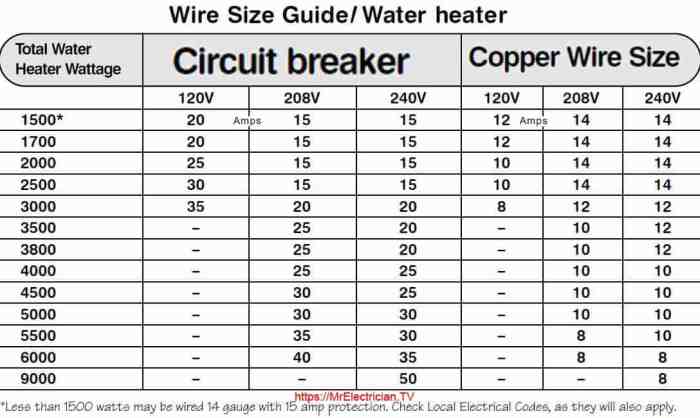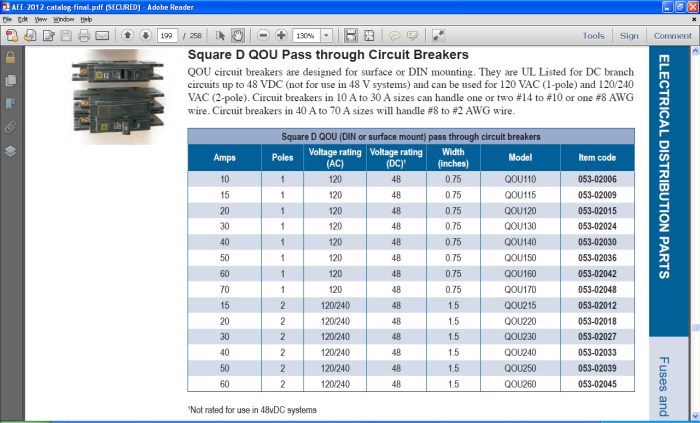The smallest standard circuit breaker size is – The smallest standard circuit breaker size plays a crucial role in ensuring electrical safety and efficiency. This comprehensive guide delves into the significance of using the appropriate circuit breaker size, exploring the factors to consider and the benefits it offers.
Understanding the concept of circuit breaker size and its implications is essential for electrical professionals and homeowners alike. By delving into the details, this guide provides valuable insights into the selection and application of the smallest standard circuit breaker size.
1. Introduction

The smallest standard circuit breaker size refers to the minimum amperage rating of a circuit breaker that is appropriate for a particular electrical circuit. Using the smallest standard circuit breaker size is crucial for ensuring electrical safety and preventing electrical fires.
2. Factors to Consider When Determining the Smallest Standard Circuit Breaker Size

When determining the smallest standard circuit breaker size, several factors must be considered:
- Amperage rating:The amperage rating of a circuit breaker indicates the maximum amount of current that it can safely handle. The load amperage of the circuit must be less than or equal to the amperage rating of the circuit breaker.
- Voltage rating:The voltage rating of a circuit breaker indicates the maximum voltage that it can handle. The circuit voltage must be less than or equal to the voltage rating of the circuit breaker.
- Circuit type:Circuit breakers are designed for specific types of circuits, such as AC or DC circuits. The circuit breaker must be compatible with the type of circuit it will be used on.
- Wire size:The wire size of the circuit must be compatible with the amperage rating of the circuit breaker. Using a wire that is too small for the amperage rating of the circuit breaker can result in overheating and electrical fires.
3. How to Determine the Smallest Standard Circuit Breaker Size

To determine the smallest standard circuit breaker size for a particular circuit, follow these steps:
- Calculate the load amperage:The load amperage is the total amount of current that will be drawn by all of the devices connected to the circuit. To calculate the load amperage, add up the amperage ratings of all of the devices.
- Choose a circuit breaker with an amperage rating that is equal to or greater than the load amperage:The amperage rating of the circuit breaker should be equal to or greater than the load amperage. Choosing a circuit breaker with an amperage rating that is too low can result in the circuit breaker tripping frequently, while choosing a circuit breaker with an amperage rating that is too high can result in electrical fires.
- Check the voltage rating of the circuit breaker to ensure that it is compatible with the circuit voltage:The voltage rating of the circuit breaker must be equal to or greater than the circuit voltage.
- Select a circuit breaker that is designed for the type of circuit (e.g., AC or DC):Circuit breakers are designed for specific types of circuits, such as AC or DC circuits. The circuit breaker must be compatible with the type of circuit it will be used on.
- Verify that the circuit breaker is compatible with the wire size:The wire size of the circuit must be compatible with the amperage rating of the circuit breaker. Using a wire that is too small for the amperage rating of the circuit breaker can result in overheating and electrical fires.
4. Benefits of Using the Smallest Standard Circuit Breaker Size
Using the smallest standard circuit breaker size offers several benefits:
- Improved safety:Using the smallest standard circuit breaker size helps to prevent electrical fires by ensuring that the circuit breaker will trip before the current exceeds a safe level.
- Reduced risk of electrical fires:Using the smallest standard circuit breaker size helps to reduce the risk of electrical fires by preventing the circuit breaker from overheating.
- Increased efficiency:Using the smallest standard circuit breaker size helps to increase the efficiency of the electrical system by reducing the amount of energy that is lost due to overheating.
- Extended lifespan of electrical equipment:Using the smallest standard circuit breaker size helps to extend the lifespan of electrical equipment by preventing it from being damaged by overcurrent.
5. Examples of Smallest Standard Circuit Breaker Sizes

The smallest standard circuit breaker sizes are typically:
- 15 amps
- 20 amps
- 25 amps
- 30 amps
The specific size of the circuit breaker that is required will depend on the load amperage of the circuit.
Popular Questions: The Smallest Standard Circuit Breaker Size Is
What is the purpose of using the smallest standard circuit breaker size?
Using the smallest standard circuit breaker size appropriate for the load ensures that the circuit is adequately protected against overcurrent conditions, preventing electrical fires and damage to equipment.
How do I determine the smallest standard circuit breaker size for my application?
To determine the smallest standard circuit breaker size, calculate the load amperage, choose a circuit breaker with an amperage rating equal to or greater than the load amperage, check the voltage rating, select a circuit breaker designed for the circuit type, and verify compatibility with the wire size.
What are the benefits of using the smallest standard circuit breaker size?
Using the smallest standard circuit breaker size offers improved safety, reduced risk of electrical fires, increased efficiency, and extended lifespan of electrical equipment.
